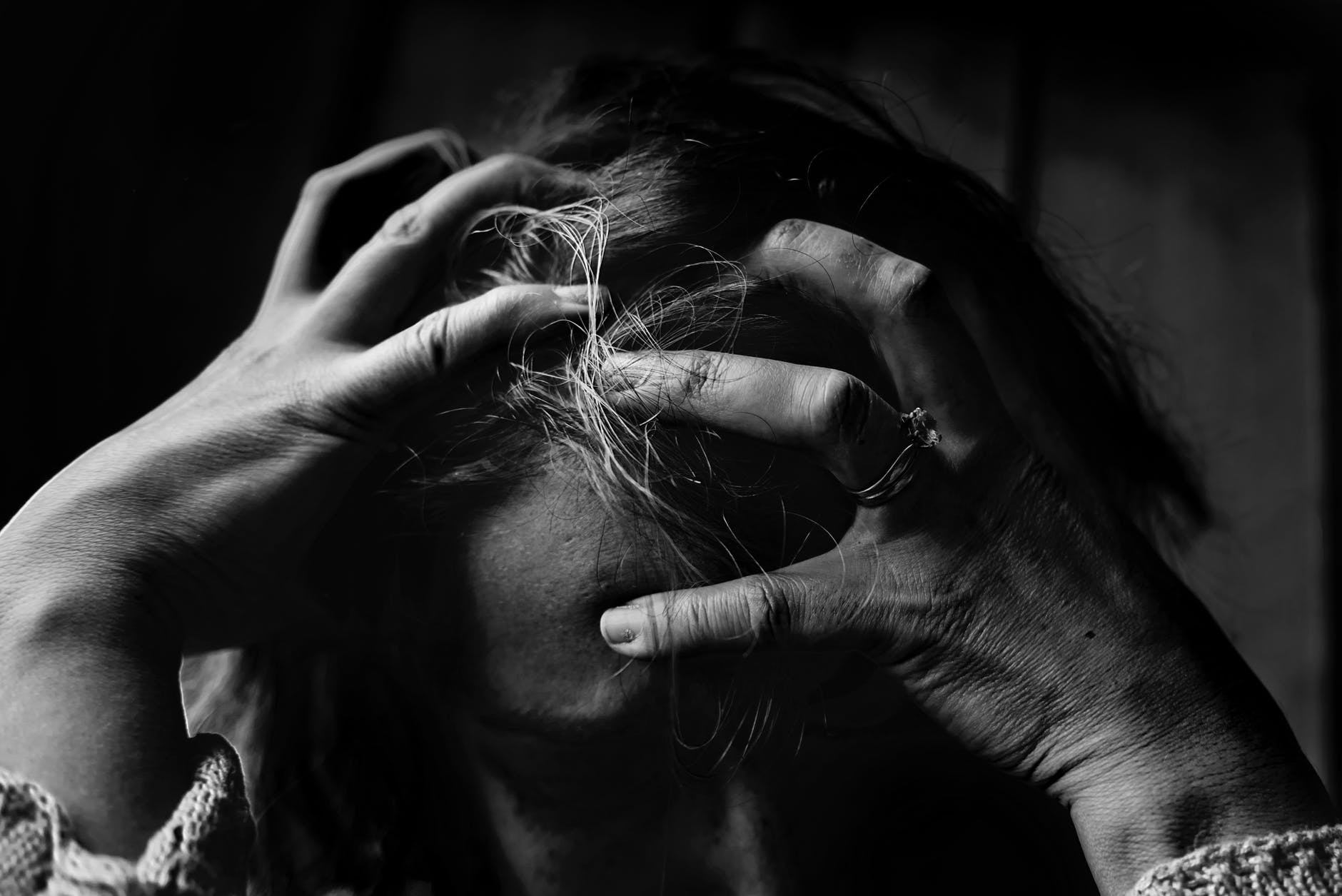When working in international development, you always feel like there’s more you could be doing.
You could reach more kids with your programs. You could garner more petition signatures to sway local decision makers. You could mobilize more funding for starving communities. There’s always too much to do and too much to care about, and never enough time or money to do it all.
Doing systems change work also means you see a lot of the ugly stuff – bureaucracy, corruption, politics, exploitation, blackmail. When you realize just how many people profit off of the world staying exactly as it is, activism not only feels overwhelming but also pointless.
In 2020/early 2021, I hit a compassion fatigue wall. A lot of us did. COVID-19 responses made saving the world feel even bigger and heavier than it did before. Caring about anything was hard, because everything required 100% of your energy.
I couldn’t girl-boss my way out of it – and I wondered if I’d ever really care about “the cause” ever again.
Then, in August 2021, I got my ADHD diagnosis.
Finding joy in activism
Last week, I read an NPR article called “How to Find Joy in Activism”, which discusses key points from Karen Walrond’s book The Lightmaker’s Manifesto: How to Work for Change Without Losing Your Joy. Her main message is that “any time you are led by your values to do purposeful action in the hopes of making the world brighter for other people,” you’re participating in activism.
And these actions don’t have to be big and flashy. To quote Walrond, “Lightmaking can look like speaking up for a teammate at a work meeting, donating your time to read with kids at a local after school program, translating your passion for baking for a charity bake sale or using your social media reach to raise the profile of a cause.”
The steps to approach lightmaking mimic the steps of making a camp fire:
- Make a clearing: Find a space for work you want to do, not what you think you “should” do.
- Gather your tinder: What skills and interests do you bring to this work?
- Find your spark: What’s the thing that ignites your passion? What makes you angry/sad/inspired enough to change the way things are?
- Tend to the flames: How do you “make room for joy” to avoid burning out?
Reading this article hit me like a lightening bolt. Ever since launching this blog last year, I’ve been ranting about diet culture, being more open and vocal about my experience with ADHD and an eating disorder, and finding whatever research I could on how all these things intersect and why it matters.
Could that all really count as activism too?
My “lightmaking” journey – diet culture, ADHD, and eating disorders
Make a clearing
I developed an eating disorder at 16 to deal with what was then undiagnosed ADHD. As an adult, fitness became a way for me to heal my relationship with my body. I never intended to care much about diet culture or body image stuff. However, because of my experience, I was interested in positive fitness spaces (as opposed to the toxic “no excuses” vibe). In researching these spaces, I kept stumbling across diet culture statistics and their link with eating disorders.
However, when it came to ADHD, I didn’t have the tools or language for it until I started therapy and was diagnosed at 38. I navigated the really messy mix of ADHD, fitness, eating disorders, and diet culture on my own for many years. And because of that, I realized that I really wanted to help other people not feel alone in their own journeys.
Gather your tinder
I brought those experiences and interests, along with my data nerd tendencies, to my newfound activism. And I found a flashpoint: the gender gap in diagnosing ADHD.
Boys are three times more likely to get diagnosed and treated for ADHD, despite evidence that girls and boys can present with ADHD at similar rates. Child development expert Dr. Patricia Quinn states that the average age of diagnosis for women with ADHD who weren’t diagnosed as children is between 36 to 38. (I was diagnosed at 38, so that tracks). This delay is largely because women and girls:
- Are overlooked due to presenting different symptoms and the perception that girls “can’t have” ADHD; and/or
- Tend to be diagnosed with mood disorders or anxiety instead, thanks to stereotypes about women being moody or “too emotional.”
I first looked into this diagnosis gap after my own diagnosis. I even wrote a blog post to try to get you as outraged about it as me.

Find your spark
What really set me off was how heavy the implications of this diagnosis gap are for women and girls, especially when it comes to how ADHD collides with eating disorders and diet culture.
We know that people with ADHD are more likely to develop an eating disorder due to:
- Impulse control issues and having a hard time regulating emotions
- Boredom/feeling understimulated
- Hyperfocus/obsession
- Perfectionism/regaining a sense of control
- Coping with stress and anxiety, compounded by social pressures and expectations on what they “should” be able to do
But specifically, girls with ADHD are nearly four times more likely to have an eating disorder than those without ADHD. And for women, one in five women seeking treatment for an eating disorder exhibits symptoms of ADHD.
We also know that eating disorders have the highest mortality rate of any mental illness, with about one person dying every hour as a direct result of an eating disorder.
On top of that, no matter what pop culture tells us, the diet-to-eating-disorder pipeline is a real thing – 35% of dieting becomes obsessive, and 20-25% of those diets become eating disorders.
We know all these things. And yet we keep overlooking women and girls with ADHD, research on the ADHD-eating disorder association is still relatively new and underfunded, and diet culture remains a $60 billion industry.
After years of being at a slow burn, seeing myself in these statistics was a turning point. I believe there is no excuse for gender stereotypes and diet culture to continue playing a role in how medical professionals and society treat people with ADHD and eating disorders in the 21st century. This is what Walrond calls a “spark statement.”

Tend to the flames
Back in March, someone I haven’t seen in years reached out to me. They shared how reading my blog was helping them grapple with their own eating disorder struggles, and that I was probably the first person that they told this to. And they thanked me for my writing.
I cried for 10 minutes straight. I’d originally gotten into the “change the world” business because I believed in solutions and wanted to do my part to make the world better. But I’d lost sight of what that meant. This person’s pain and vulnerability in reaching out showed me that these issues really are important to keep talking about.
In that moment, I found my motivation again.
Somedays, I want to burn everything to the ground (we ride at dawn!), while other days I’d rather stay in bed and stop caring. Tending these flames will take balance, and setting boundaries is key.
For instance, I can’t read scientific articles at 9pm or respond to every “wellness” influencer infiltrating online eating disorder support spaces. But I can keep up my bi-weekly blog posting and telling my story to anyone who will listen (and even if they won’t). I’m also working on getting certified as a fitness coach so I can be a resource to others facing similar struggles to mine. And my spark statement will help remind me why on Earth I decided to go down this road in the first place.
Finding your joy again
There’s a lot that seems hopeless and unfair in the world right now. But in the midst of everything, I’ve found something that has made me care again.
Not everyone will feel as strongly about these issues as I do, and that’s a good thing. The world needs people to care deeply about different things. Otherwise, things would fall through the cracks and nothing would ever change.
My main takeaway from the article on Walrond’s book is that there is no one way to save the world. There is no one way to be an activist. Everyone has the ability to take purposeful action in order to make the world brighter for someone else. You just need to find your niche.
There is a place for you in activism. And the world needs you.



